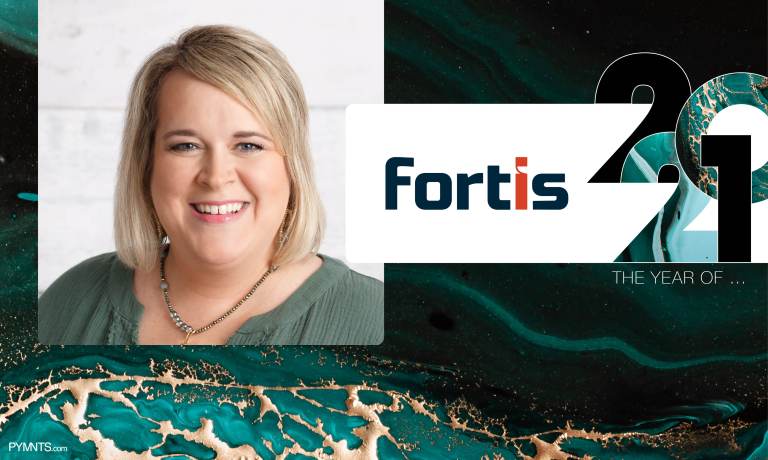
Businesses were forced to speed up their digital transformations in 2021, says Ashley Usher, chief integration and information officer at Fortis, and they embraced platforms in increasing numbers to build momentum and create truly seamless payment experiences. Read her thoughts in the PYMNTS eBook, “In a Word: 50 Thought Leaders Sum Up 2021.”
The countless dynamics of 2021 demanded acceleration. The shifting needs of commerce due to the impact from COVID-19 caused a rapid acceleration in product innovation and automation and shifted payments to become invisible in many different landscapes.
There wasn’t an industry unaffected by the financial and operational impacts, prompting many of our partners and merchants to quickly mobilize a commerce experience, while retail storefronts and many small and medium-sized businesses (SMBs) were shutting their doors. Developing methods for enriching and enabling safe business operations and payment solutions became imperative and required, which led to an acceleration of product innovation by means that have not been demanded in recent years
From hotels to doctors’ offices, contactless payments through online and mobile orders enabled customers to check out safely and allowed business owners to see revenue and the activities of their day in a format of their choosing while easing the burden of this transition — brought on by market acceleration and product innovation — on partners and merchants.
With acceleration came a demand for relentless automation in workflows. This was seen through automation within the ERP landscape and the ways SMBs found survival in driving efficiencies to support their customers. Supply chain disruptions caused us to think differently about what we could automate and handle through software inside our own walls instead of through a third party. Our partners automated everything from accounts receivable (AR) workflow to artificial intelligence (AI) automation of key data points in efforts of delivering products to our customers in a more meaningful fashion.
Consumers and merchants required payments to be embedded in new and novel ways as a result of COVID, and I don’t believe things will ever return to “normal.” There was a need for the ability to transact or do business where the consumer desired to do business. Digital transformation of storefronts and marketplaces in real time caused shifts in business models longed for but not yet realized until the tipping point of COVID occurred. Consumers demanded the ability to digitally transact without the encumbrances of traditional business.
As these experiences commanded our focus, expectations for interacting with businesses and conducting commerce grew in the eyes of consumers and business owners. Acclimating to accelerated technology, consumers quickly adopted new experiences like QR codes to review menus or pay bills. Buy now, pay later (BNPL) is quickly becoming an expected standard part of commerce, providing options for how a consumer chooses to pay for goods. In the B2B sector, where roughly half of payments are still conducted via check, embedded payments allowed for the adoption of technology to drive payments, solving pain points that have existed for decades.
In many aspects, I hope the acceleration that caused us to solve problems swiftly never dissipates. Through an increasingly connected world, we are aimed at guiding a journey for our software partners that enables commerce and creates meaningful payments experiences for the SMBs we have the privilege to support.